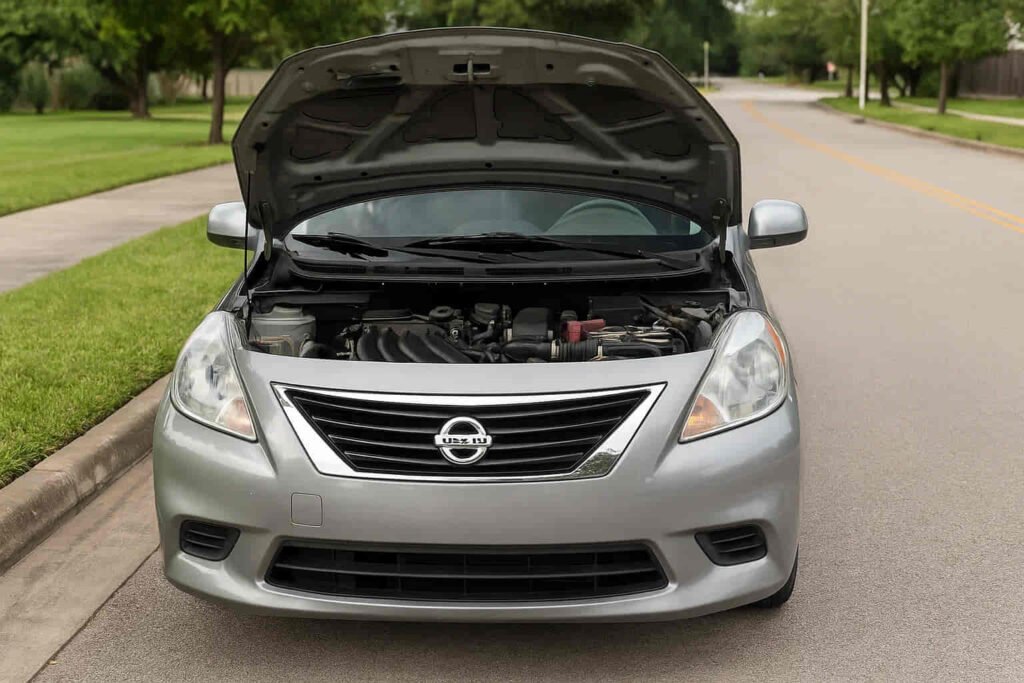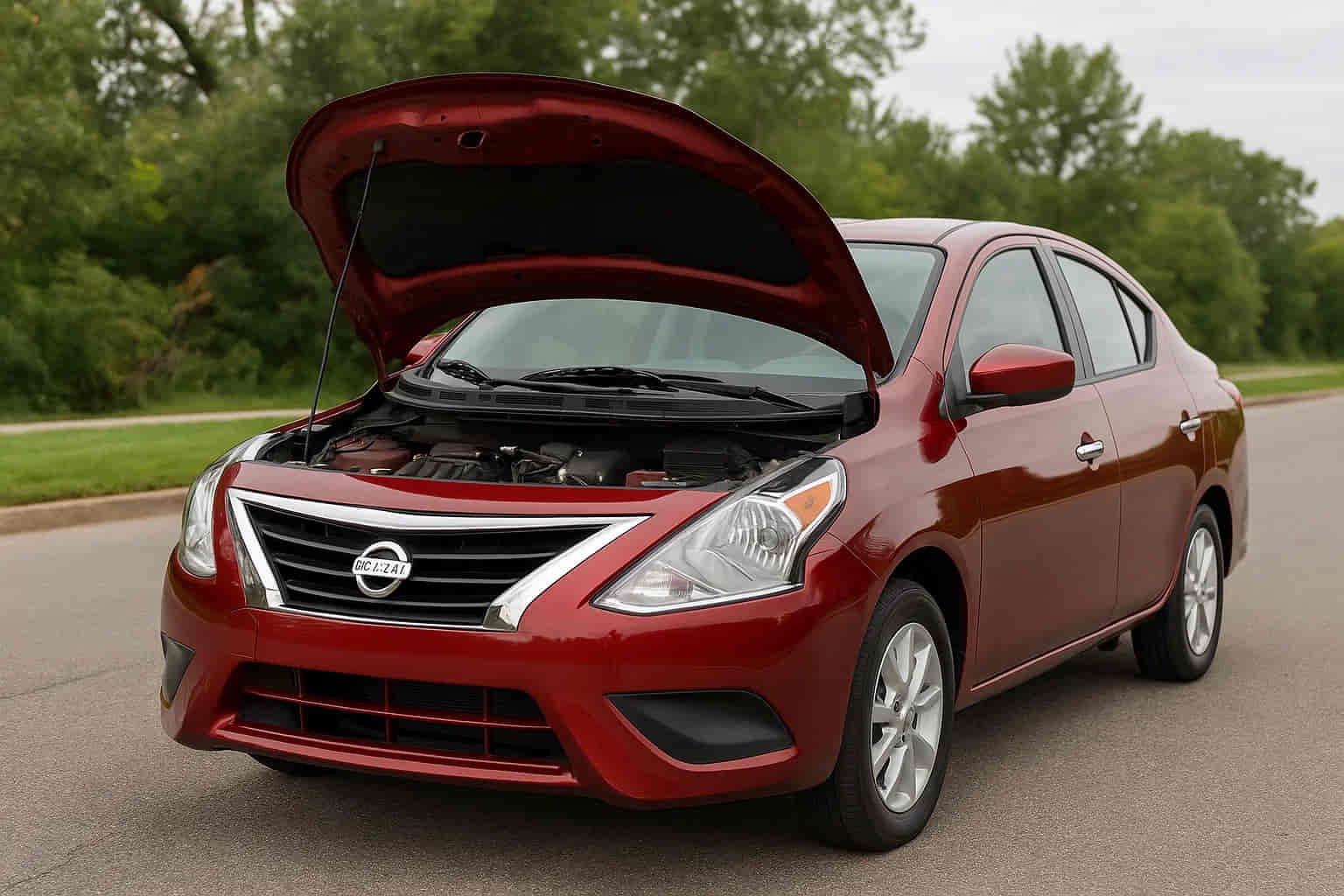If your Nissan Versa starts to hesitate when you press the gas, makes a whining noise during acceleration, or suddenly shudders on the highway, chances are you are dealing with transmission issues. For many Versa owners, what begins as a minor annoyance quickly turns into a costly nightmare. Transmission repairs, especially with the Versa’s continuously variable transmission (CVT), are among the most expensive fixes a car owner can face. Replacements often run into thousands of dollars, leaving drivers frustrated and uncertain about whether their car is even worth repairing.
The Nissan Versa has long been marketed as a budget-friendly, fuel-efficient sedan, making it a popular choice for daily commuters and first-time car buyers. But over the years, complaints about its transmission have become one of the most common concerns reported by owners. Understanding what causes these issues, how to recognize the symptoms, and what solutions are available can save you from unexpected breakdowns and heavy repair bills.
In this guide, we’ll break down the most frequent Nissan Versa transmission problems, explain the early warning signs you shouldn’t ignore, and highlight the most effective fixes to help you keep your car reliable for the long run.
Causes of Nissan Versa Transmission Problems
Many Nissan Versa owners discover transmission issues not because of sudden breakdowns but due to problems that quietly build up over time. The most critical factor lies in the design of the continuously variable transmission, a system praised for fuel efficiency but notorious for being less durable under stress. Unlike traditional automatic gearboxes that rely on solid gear changes, the Versa’s CVT depends on a belt-and-pulley mechanism that is highly sensitive to heat, lubrication, and driving habits. When the transmission fluid begins to degrade or drop below optimal levels, friction increases and the delicate internal parts start wearing down much faster than expected. This deterioration often goes unnoticed until the symptoms become severe, leaving drivers surprised at how quickly performance declines.
Manufacturing flaws have also played a role in the reputation of the Versa’s transmission. Certain production years, particularly in the early 2010s, suffered from calibration issues in the transmission control module, which led to unpredictable shifts and higher stress on the CVT. Combined with solenoid and valve body malfunctions, these design shortcomings magnified the problem for many owners, sometimes even prompting recalls and extended warranty programs from Nissan.
Even beyond engineering challenges, real-world driving conditions make the situation worse. City traffic with frequent stops, carrying heavy loads, or pressing too hard on the accelerator can accelerate wear on the transmission system. What should have been a long-lasting drivetrain often turns into one of the most vulnerable components of the vehicle. For many Versa drivers, the combination of sensitive design, missed maintenance, and external stress explains why transmission problems are so commonly reported.
Symptoms of Nissan Versa Transmission Problems

Drivers often begin to suspect transmission trouble in the Nissan Versa when the car no longer responds the way it once did. The most common sign comes in the form of hesitation: you press the accelerator and the engine revs loudly, but the car takes too long to pick up speed. This delayed response, sometimes described as “slipping,” can make highway driving especially stressful, as merging or overtaking becomes unpredictable. Alongside this, many owners notice a distinct shudder during acceleration, almost as if the vehicle is struggling to find its footing on the road.
Noise is another early warning sign. A high-pitched whining or grinding sound, particularly when accelerating from a stop, often points to internal wear in the continuously variable transmission. As the condition worsens, some Versas enter what drivers describe as a “limp mode,” where the vehicle limits power to protect the transmission from further damage. Fluid issues can also be a giveaway. Leaks beneath the car or a burnt, unpleasant smell under the hood may indicate that the transmission fluid is overheating or breaking down, putting the CVT at risk of complete failure.
While these symptoms may begin subtly, they rarely disappear on their own. Instead, they gradually intensify, leaving drivers with rising repair costs and the looming possibility of a full transmission replacement. Recognizing these signals early is often the difference between a minor fix and a repair bill that exceeds the value of the car itself.
Fixes and Solutions for Nissan Versa Transmission Problems
When transmission problems begin to surface in a Nissan Versa, the path to resolution depends largely on how early the issue is detected. In many cases, the simplest and most effective step is to address the condition of the transmission fluid. Because the Versa’s CVT relies heavily on proper lubrication and cooling, replacing degraded fluid or correcting low levels can often restore smoother operation and prevent further wear. Ignoring this maintenance step, however, almost always leads to more expensive repairs down the line.
For some owners, software plays an unexpected role in the solution. Nissan has issued updates for the transmission control module in various model years, and reprogramming the system can eliminate erratic behavior that feels like mechanical failure. This digital fix is considerably cheaper than mechanical repairs, but it only works when the underlying components are still intact. Once internal damage progresses too far, mechanical intervention becomes unavoidable.
At that stage, drivers face the difficult choice between repairing or replacing the transmission. A partial repair, such as replacing the valve body or solenoids, may restore function for a time, but it is rarely a long-term cure. Full replacement, while costly, often provides the most reliable outcome, especially for older vehicles where repeated failures are likely. Nissan has recognized the scale of these problems and in many cases has extended warranty coverage on Versa CVTs, which means some owners may qualify for low-cost or even free repairs.
Choosing the right solution ultimately comes down to balancing cost, reliability, and long-term ownership plans. For a newer Versa, investing in a replacement may make sense, but for an older model, even a successful repair might exceed the vehicle’s market value. Knowing the available options helps owners avoid rushed decisions when their car suddenly becomes undriveable.
Preventing Future Nissan Versa Transmission Problems
Preventing transmission issues in the Nissan Versa begins with understanding just how fragile its CVT system can be under poor maintenance or heavy use. Unlike traditional automatic gearboxes, this transmission demands more frequent fluid changes, often every 30,000 to 40,000 miles, to keep the internal belt and pulleys protected from excessive friction. Skipping or delaying this service shortens the lifespan of the unit dramatically, which is why consistent maintenance is the most reliable safeguard against costly repairs.
Driving behavior also plays a significant role in extending the health of the Versa’s transmission. Gentle acceleration, avoiding aggressive throttle inputs, and reducing time spent in stop-and-go traffic whenever possible can all lessen the strain placed on the CVT. Long highway drives, where the system can operate at a steady pace, are far less damaging than constant city driving. Owners who understand these differences can adjust their driving style to reduce unnecessary stress on the transmission.
It is equally important to remain attentive to early warning signs. Small changes, such as a faint whine or a delay in response, should not be ignored. Addressing these symptoms promptly with professional inspection often prevents minor issues from escalating into complete failure. Nissan’s extended warranties for affected model years also offer additional protection, but they are only valuable if owners act before coverage expires.
Ultimately, keeping a Versa reliable over the long term requires a proactive mindset. Regular servicing, careful driving habits, and quick attention to unusual behavior create the best defense against transmission problems. For many drivers, this preventive approach is the difference between enjoying years of dependable use and facing an unexpected repair bill that rivals the value of the car.
Conclusion
The Nissan Versa has earned a reputation as an affordable, fuel-efficient sedan, but its transmission problems remain the single most concerning weakness for many owners. What often starts as a slight hesitation or faint noise can quickly spiral into a costly repair, sometimes exceeding the value of the car itself. By understanding the underlying causes, paying close attention to the early symptoms, and exploring the right fixes, drivers can protect themselves from the financial and emotional frustration that comes with a failing CVT.
Still, prevention is always more effective than repair. Consistent maintenance, timely fluid changes, and mindful driving habits give the Versa’s transmission the best chance to perform reliably over time. For those already dealing with issues, knowing when to repair, when to replace, and when to lean on Nissan’s extended warranty programs provides a path forward without unnecessary expense.
In the end, Nissan Versa transmission problems do not have to define the ownership experience. With awareness, early action, and preventive care, many of these challenges can be managed or avoided altogether. For current owners, this knowledge offers peace of mind; for potential buyers, it provides the clarity needed to make a confident decision about whether the Versa is the right car for their needs.

